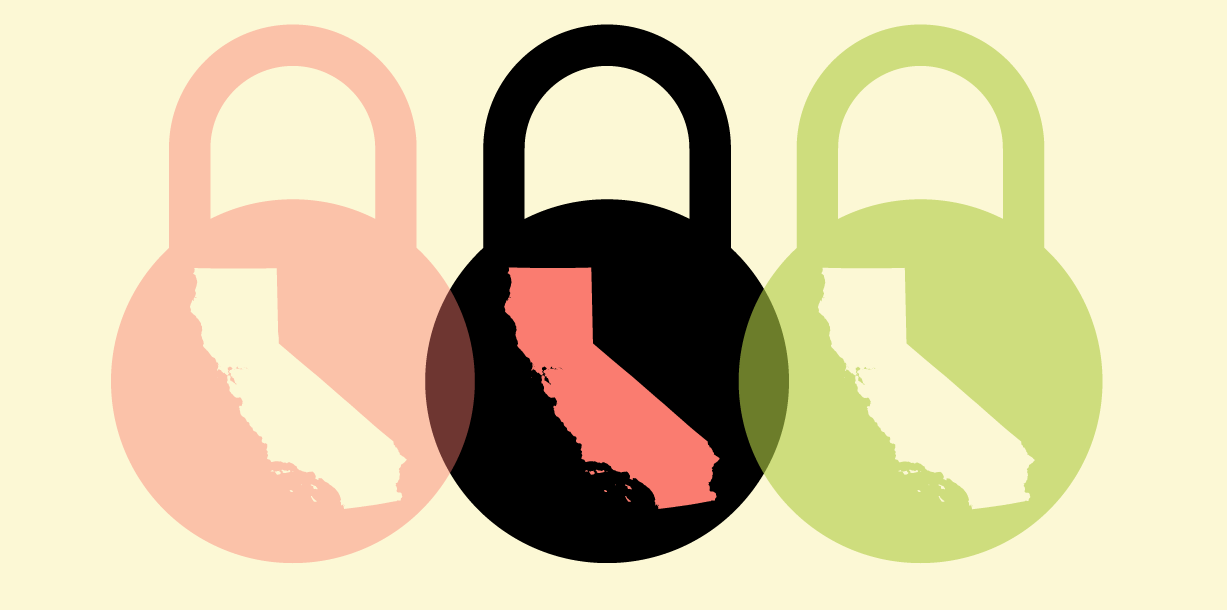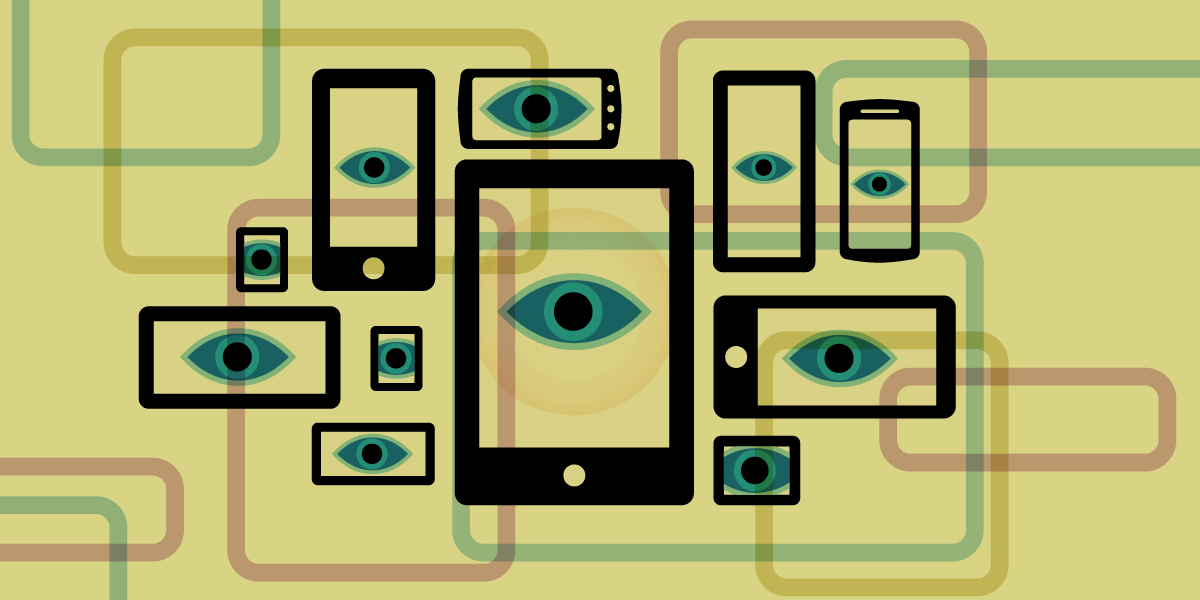Decoding the California DMV's Mobile Driver's License
The State of California is currently rolling out a “mobile driver’s license” (mDL), a form of digital identification that raises significant privacy and equity concerns. This post explains the new smartphone application, explores the risks, and calls on the state and its vendor to focus more on protection of the users.
What is the California DMV Wallet?
The California DMV Wallet app came out in app stores last year as a pilot, offering the ability to store and display your mDL on your smartphone, without needing to carry and present a traditional physical document. Several features in this app replicate how we currently present the physical document with key information about our identity—like address, age, birthday, driver class, etc.
However, other features in the app provide new ways to present the data on your driver’s license. Right now, we only take out our driver’s license occasionally throughout the week. However, with the app’s QR Code and “add-on” features, the incentive for frequency may grow. This concerns us, given the rise of age verification laws that burden everyone’s access to the internet, and the lack of comprehensive consumer data privacy laws that keep businesses from harvesting and selling identifying information and sensitive personal information.
For now, you can use the California DMV Wallet app with TSA in airports, and with select stores that have opted in to an age verification feature called TruAge. That feature generates a separate QR Code for age verification on age-restricted items in stores, like alcohol and tobacco. This is not simply a one-to-one exchange of going from a physical document to an mDL. Rather, this presents a wider scope of possible usage of mDLs that needs expanded protections for those who use them. While California is not the first state to do this, this app will be used as an example to explain the current landscape.
What’s the QR Code?
There are two ways to present your information on the mDL: 1) a human readable presentation, or 2) a QR code.
The QR code with a normal QR code scanner will display an alphanumeric string of text that starts with “mdoc:”. For example:
“mdoc:owBjMS4wAY..." [shortened for brevity]
This “mobile document” (mdoc) text is defined by the International Organization for Standardization’s ISO/IEC18013-5. The string of text afterwards details driver’s license data that has been signed by the issuer (i.e., the California DMV), encrypted, and encoded. This data sequence includes technical specifications and standards, open and enclosed.
In the digital identity space, including mDLs, the most referenced and utilized are the ISO standard above, the American Association of Motor Vehicle Administrators (AAMVA) standard, and the W3C’s Verified Credentials (VC). These standards are often not siloed, but rather used together since they offer directions on data formats, security, and methods of presentation that aren’t completely covered by just one. However, ISO and AAMVA are not open standards and are decided internally. VCs were created for digital credentials generally, not just for mDLs. These standards are relatively new and still need time to mature to address potential gaps.
The decrypted data could possibly look like this JSON blob:
{"family_name":"Doe",
"given_name":"John",
"birth_date":"1980-10-10",
"issue_date":"2020-08-10",
"expiry_date":"2030-10-30",
"issuing_country":"US",
"issuing_authority":"CA DMV",
"document_number":"I12345678",
"portrait":"../../../../test/issuance/portrait.b64",
"driving_privileges":[
{
"vehicle_category_code":"A",
"issue_date":"2022-08-09",
"expiry_date":"2030-10-20"
},
{
"vehicle_category_code":"B",
"issue_date":"2022-08-09",
"expiry_date":"2030-10-20"
}
],
"un_distinguishing_sign":"USA",
{
"weight":70,
"eye_colour":"hazel",
"hair_colour":"red",
"birth_place":"California",
"resident_address":"2415 1st Avenue",
"portrait_capture_date":"2020-08-10T12:00:00Z",
"age_in_years":42,
"age_birth_year":1980,
"age_over_18":true,
"age_over_21":true,
"issuing_jurisdiction":"US-CA",
"nationality":"US",
"resident_city":"Sacramento",
"resident_state":"California",
"resident_postal_code":"95818",
"resident_country": "US"}}
Application Approach and Scope Problems
California decided to contract a vendor to build a wallet app rather than use Google Wallet or Apple Wallet (not to be conflated with Google and Apple Pay). A handful of other states use Google and Apple, perhaps because many people have one or the other. There are concerns about large companies being contracted by the states to deliver mDLs to the public, such as their controlling the public image of digital identity and device compatibility.
This isn’t the first time a state contracted with a vendor to build a digital credential application without much public input or consensus. For example, New York State contracted with IBM to roll out the Excelsior app during the beginning of COVID-19 vaccination availability. At the time, EFF raised privacy and other concerns about this form of digital proof of vaccination. The state ultimately paid the vendor a staggering $64 million. While initially proprietary, the application later opened to the SMART Health Card standard, which is based on the W3C’s VCs. The app was sunset last year. It’s not clear what effect it had on public health, but it’s good that it wound down as social distancing measures relaxed. The infrastructure should be dismantled, and the persistent data should be discarded. If another health crisis emerges, at least a law in New York now partially protects the privacy of this kind of data. NY state legislature is currently working on a bill around mDLs after a round-table on their potential pilot. However, the New York DMV has already entered into a $1.75 million dollar contract with the digital identity vendor IDEMIA. It will be a race to see if protections will be established prior to pilot deployment.
Scope is also a concern with California’s mDL. The state contracted with Spruce ID to build this app. The company states that its purpose is to empower “organizations to manage the entire lifecycle of digital credentials, such as mobile driver’s licenses, software audit statements, professional certifications, and more.” In the “add-ons” section of the app, TruAge’s age verification QR code is available.
Another issue is selective disclosure, meaning the technical ability for the identity credential holder to choose which information to disclose to a person or entity asking for information from their credential. This is a long-time promise from enthusiasts of digital identity. The most used example is verification that the credential holder is over 21, without showing anything else about the holder, such as their name and address that appear on the face of their traditional driver’s license. But the California DMV wallet app, has a lack of options for selective disclosure:
- The holder has to agree to TruAge’s terms and service and generate a separate TruAge QR Code.
- There is already an mDL reader option for age verification for the QR Code of an mDL.
- There is no current option for the holder to use selective disclosure for their mDL. But it is planned for future release, according to the California DMV via email.
- Lastly, if selective disclosure is coming, this makes the TruAge add-on redundant.
The over-21 example is only as meaningful as its implementation; including the convenience, privacy, and choice given to the mDL holder.
TruAge appears to be piloting its product in at least 6 states. With “add-ons”, the scope of the wallet app indicates expansion beyond simply presenting your driver’s license. According to the California DMV’s Office of Public Affairs via email:
“The DMV is exploring the possibility of offering additional services including disabled person parking placard ID, registration card, vehicle ownership and occupational license in the add-ons in the coming months.”
This clearly displays how the scope of this pilot may expand and how the mDL could eventually be housed within an entire ecosystem of identity documentation. There are privacy preserving ways to present mDLs, like unlinkable proofs. These mechanisms help mitigate verifier-issuer collusion from establishing if the holder was in different places with their mDL.
Privacy and Equity First
At the time of this post, about 325,000 California residents have the pilot app. We urge states to take their time with creating mDLs, and even wait for verification methods that are more privacy considerate to mature. Deploying mDLs should prioritize holder control, privacy, and transparency. The speed of these pilots is possibly influenced by other factors, like the push for mDLs from the U.S. Department of Homeland Security.
Digital wallet initiatives like eIDAS in the European Union are forging conversations on what user control mechanisms might look like. These might include, for example, “bringing your own wallet” and using an “open wallet” that is secure, private, interoperable, and portable.
We also need governance that properly limits law enforcement access to information collected by mDLs, and to other information in the smartphones where holders place their mDLs. Further, we need safeguards against these state-created wallets being wedged into problematic realms like age verification mandates as a condition of accessing the internet.
We should be speed running privacy and provide better access for all to public services and government-issued documentation. That includes a right to stick with traditional paper or plastic identification, and accommodation of cases where a phone may not be accessible.
We urge the state to implement selective disclosure and other privacy preserving tools. The app is not required anywhere. It should remain that way no matter how cryptographically secure the system purports to be, or how robust the privacy policies. We also urge all governments to remain transparent and cautious about how they sign on vendors during pilot programs. If a contract takes away the public’s input on future protections, then that is a bad start. If a state builds a pilot without much patience for privacy and public input, then that is also turbulent ground for protecting users going forward.
Just because digital identity may feel inevitable, doesn’t mean the dangers have to be.

